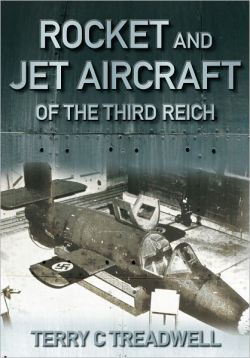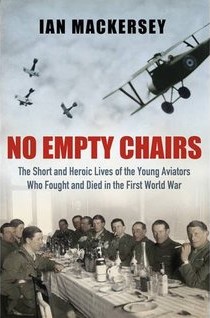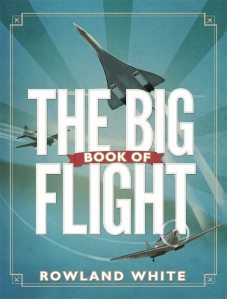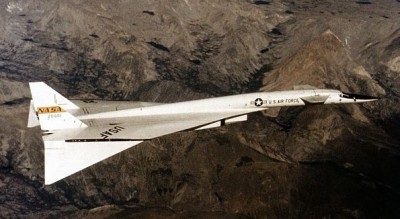 Britannia Obscura: Mapping Britain’s Hidden Landscapes, Joanne Parker (Vintage 2014)
Britannia Obscura: Mapping Britain’s Hidden Landscapes, Joanne Parker (Vintage 2014)
An excellent and unpretentious guide to a subject that can go sadly awry in the wrong hands: psychogeography. Whether she’s writing about stone-circles or ley-lines, Joanne Parker keeps an open mind but never allows her brains to fall out. Her message is: “Here’s what people have thought and done – now make up your own mind.” Or maybe that should be: “Now go and see for yourself.” This book is both a guide and a goad, because after reading it you’ll want to look at what it talks about.
But stone-circles, in chapter two, and ley-lines, in chapter four, are esoteric excursions amid earthly or aerial realities. Chapters one and two are devoted to caves and canals. Then the book takes to the air for a look at flight-paths in the fifth and final chapter. Parker must have planned that journey from the underground to the aerial, from the subterranean to the celestial. The themes of the book are firmly established in that first chapter: there’s much more out there than readers may have supposed.
In fact, there’s a whole new world beneath your feet. Caves are fascinating places both physically and psychologically. Merely knowing about them alters the way you view a landscape. When you enter and explore them, another landscape changes – your own mind. But caving isn’t just about exploration: it can also involve excavation. Cave-systems can be extended or brought together by digging. It’s tough and dirty work and the cavers who undertake it are running risks like those faced by their mining fathers and grandfathers before them.
But one big difference is that they aren’t being paid for the risks they run. One of the genetic legacies of agriculture may be a propensity to enjoy activity for its own sake, because a farmer’s work is never done. Hobbies are a kind of work and our conscious motives for them may be no more than rationalizations for urges that literally uncoil from our DNA. But the urge to compete must be older than anything agricultural:
When Nixon discovered Titan, reducing Gaping Gill to the second largest cave in Britain, he was, he confesses, “delighted to steal the crown, as it were” from Yorkshire. While sprawling underground passages may stretch underground like colossal sleeping dragons, with a prehistoric disregard for county borders and human rivalries, one spur to diggers is certainly local pride. […] The connection of Lancashire’s Ireby Fell caverns to Rift Pot in Yorkshire was celebrated proudly with Eccles cake, Lancashire cheese, Black Sheep beer and Yorkshire teacakes, as the Three Counties system took its penultimate step towards deposing Ogof Draenen. And for many other cavers, making their local caverns deeper, longer or more complex than caverns further afield becomes a challenge akin to the race between medieval parishes to build church spires ever closer to the heavens. (ch. 1, “Underground, Overground: The Caver’s Map of Britain”, pg. 26)
So that chapter delves deep into the earth; the next delves deep into history as it looks at “Prehistoric Patterns: The Megalithic Shape of Britain”. But the caving chapter has prepared the way, because caves were among the first places occupied in prehistory: “The Torquay cave also boasts a human jawbone, dated between 38,000 and 40,000 years old, making it one of the oldest fossils from modern man ever to have been found in Europe” (pg. 16). No stone-circle is as old as that and maybe human beings weren’t capable of creating them so long ago. In some cases, matching a stone-circle would be a big challenge even today, with the full resources of our technological age. The architectural expertise and astronomical alignments of sites like Avebury and Stonehenge should stir the stolidest mind.
So could the subject of chapter three, the “Hidden Highways” that form “The Lost Map of Britain’s Inland Navigators”. In other words: canals. They were the veins and arteries of the Industrial Revolution. Then thrombosis and gangrene set in, because advancing technology made roads and railways more economical, so the canal network is much smaller than it used to be. Economics expanded it, then choked and contracted it.
But canals had become part of psychogeography, so their decline hasn’t been irreversible. Water has always been an esoteric element, as John Buchan conveyed in one of his best short-stories, but canals were a new variation on an ancient them: they were river-like, but they didn’t flow and they didn’t swing or swerve. Sometimes they dove straight through hills. The strangeness and romance of canals are well-summed up for me in the fact that Robert Aickman, one of England’s greatest macabre writers, was the founder and early vice-president of the Inland Waters Association. And people who love canals don’t like to see them disappear:
The Wey and Arun Canal Trust are working piecemeal on the canal, in the hope that some day its full length might be revived. Many other canals around the country are, similarly, waiting for their second coming, trusting to the undiminished enthusiasm of optimistic volunteers – to the successors of men like the late David Hutchings, who, after his groundbreaking restoration of the Stratford Canal in 1958, proclaimed simply, “Fortunately none of us were experts, or we should all have known that it was impossible.” (ch. 3, pg. 89)
Hobbies can be hard work. For some people, they wouldn’t be fun if they weren’t. But the ley-hunting of chapter four is usually more leisurely than caving or canal-recreation. Ley-lines are earthbound, but they capture the imagination in a special way. The man who introduced them to the world, Alfred Watkins, had the right name: earthy and English. And he chose the right string of monosyllables for the title of the book he published about ley-lines in 1925: The Old Straight Track. His theory was the British landscape still bore the signposts used by ancient traders in salt, flint, furs and other necessities of prehistoric life. By using hill-tops, stone-circles and churches built on ancient sites, he mapped what he called ley-lines, or the routes used in ancient times to travel in the most direct way across the landscape.
But there’s one of the difficulties with his theory right away: the most direct way across a landscape is rarely the easiest or most convenient. Why climb up and down a hill or wade through a marsh when it’s quicker to go around it? And are the alignments that Watkins identified really deliberate? In some ways it didn’t matter: ley-lines captured the imagination of countless people and have inspired countless expeditions. And adaptations of his theory have slipped the surly bonds of ergonomics: some people say that ley-lines are about earth-currents, not economics. There’s a lot of speculation, insubstantiality and even UFOlogy to ley-lines today. I don’t know what Joanne Parker herself thinks. She presents all sides of the arguments and chapter four becomes part of the camera obscura offering an overview of the wildness, weirdness and wackiness of British psychogeography.
Then, after the UFO flight-paths of chapter four, the book takes to the wing for the real flight-paths of chapter five. Except that the earliest human aeronauts in Britain weren’t on the wing: they were under the basket. Balloons were the first stage of man’s conquest of the air. They’ve never gone away: like canals, although they’re obsolete in strictly practical terms, there’s something special about them that invites and sustains serious devotees. But the planes that replaced balloons, like the trains that replaced canal-boats, have more devotees. Maybe Parker should have included a chapter on trains and their tracks, but I don’t think the book misses them. This is Britannia Obscura and trains aren’t obscure. I like them, but I can read about them elsewhere.
I’ve never read about Britain’s “Flight Paths and Regions” before. Air has always been an emblem of fluidity, but there’s a lot of rigidity up there now:
The practical problem with so much free airspace being gobbled up [by commercial aviation] is that it makes routes across the country more and more difficult for general aviation. “Where I live in the south-east,” Brian Hope says, “you can fly between airports at the moment to get north or west. But if Farnborough and Southend airports both get controlled airspace, that would block those routes.” It’s a little like a gated community suddenly being built in the middle of the Pennine Way or halfway round the South West Coast Path. And it’s not just close to London that these problems exist. The controlled airspace around Birmingham and Manchester is also notoriously difficult to avoid, and Bristol’s controlled airspace has recently joined up with Cardiff’s to create a vast impasse in the west. (ch. 5, “Highways in the Air: The Map of Britain’s Skies”, pg. 151)
I hadn’t thought about any of that before, but I hadn’t thought about a lot of the things in this book before. It’s been a mind-expander and an eye-opener, teaching me a lot and prompting me to look for more information elsewhere on everything from Pontcysyllte Aqueduct, “one of the seven wonders of the canal world” (pg. 70), to the Belinus Line, a ley that stretches the entire length of the British Isles and seems to connect Inverhope, Inverness, Carlisle, Birmingham, Winchester and Lee-on-Solent.
Read Full Post »








